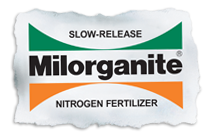Best Flowering Trees and Shrubs
- horticulturist and gardening expertApril 8, 2025
Add another layer of color to your landscape with spring and summer flowering trees and shrubs. Small or large, these beauties add color, support pollinators, and help attract birds to the landscape. Many also provide attractive foliage, fall color, fruit, and interesting forms and bark. You will find many more flowering trees and shrubs suited to your gardens, but these are a few that provide a multitude of benefits and tend to be easy to grow.
Include flowering trees and shrubs in mixed borders and gardens. Use varieties with different bloom times, fall colors, fruit, interesting bark, and form to create continuous color and beauty throughout the year. Complement them with evergreens, flowers, grasses, and bulbs.
What Hardiness Level is my Landscape?
Our native serviceberries (Amelanchier spp.), also known as juneberries, provide four seasons of beauty and edible fruit you and the birds can enjoy. The plant is also a host plant for as many as 124 caterpillar species. White flowers in spring give way to June fruit you and the birds can enjoy. The leaves turn yellow, orange, red, or burgundy in the fall and drop to reveal attractive gray bark in the winter. You will find serviceberry shrub and tree species suited to zones 3 to 9. These plants prefer full sun to shade and moist, well-draining soil. Select one that best fits your landscape design and available space.
Don’t pass on crabapples (Malus hybrids) because of disease problems and messy fruit. New varieties of this drought-tolerant plant have improved resistance and persistent fruit the birds will devour. This means you won’t be chasing away the German yellow jackets while raking up the fallen fruit.
This flowering tree prefers full sun and moist, well-drained soil but is drought-tolerant once established. You’ll find crabapple varieties with white, pink, lavender, red, or burgundy spring flowers. Fruit color also varies with the variety and is available in yellow, red, or burgundy. Hardy in zones 3 to 8, crabapples with fruit that softens in late fall and winter provide birds with a welcome feast. This tree is also a host plant for 350 different species of caterpillars.

Hawthorn Crataegus
The adaptable Hawthorn (Crataegus spp.) is another flowering tree that offers several seasons of beauty. The white spring flowers start to be fragrant, but the smell soon deteriorates. This and the thorns can create a hazard, so keep these features in mind when selecting a location. Thornless cockspur hawthorn (Craegus crusgalli var. inermis) has all the ornamental appeal but no thorns. As the weather cools in fall, the leaves turn an eye-catching red, orange, or burgundy, and those with horizontal branching add interest to the winter landscape. Hardy in zones 3 to 8, they grow best in full sun to light shade with moist, well-drained soil. Most hawthorns adapt to a wide range of soil as long as there is good drainage and are drought-tolerant once established. Like crabapples, they also attract and support pollinators, are a host plant for several caterpillars, and provide an important winter food source for songbirds.
Our native redbuds (Cercis sp.), subspecies, and cultivars offer multiple seasons of beauty and serve as a host for 12 caterpillar species while providing nectar for insects, including native bees. Pink, lavender or red edible flowers appear in early spring all along the branches and trunk. Heart-shaped leaves emerge after flowering and turn golden yellow in the fall. Hardy in zones 4 to 9, northern gardeners should look for selections known to be hardy in their region. Grow this flowering tree in full to part sun with moist, well-drained soil. It can tolerate occasionally dry soils, and although it can be somewhat short-lived, the beauty it provides is worth the investment.
From the ground-hugging Bunchberry (Cornus canadensis) to the much larger flowering (Cornus florida) and Pacific dogwoods (Cornus nuttalli) at 30 to 40’ tall and many sizes in between, you just may find one suited to your landscape. Most require moist, well-drained soil and suffer during hot, dry weather. Select one suited to your hardiness zone and growing conditions. Red twig (Cornus sericea), Silky (Cornus amomum) and the vigorous Gray dogwood (Cornus racemosa) are a few of the popular dogwood shrubs. The native Pagoda dogwood (Cornus alternifolia) is colder and hardy (zones 3 to 7) than flowering dogwood, blooms after the leaves emerge, and has horizontal branches that are quite striking. You will enjoy the multiple seasons of beauty these plants provide. You’ll enjoy the spring flowers, colorful fruit, fall color, and, in many instances, structure or twig color that add interest to the winter landscape. You’ll find a variety of native and introduced dogwoods with hardiness varying from zones 2 to 9 and 10 on the West Coast and those that support pollinators and fruit that feed the birds.
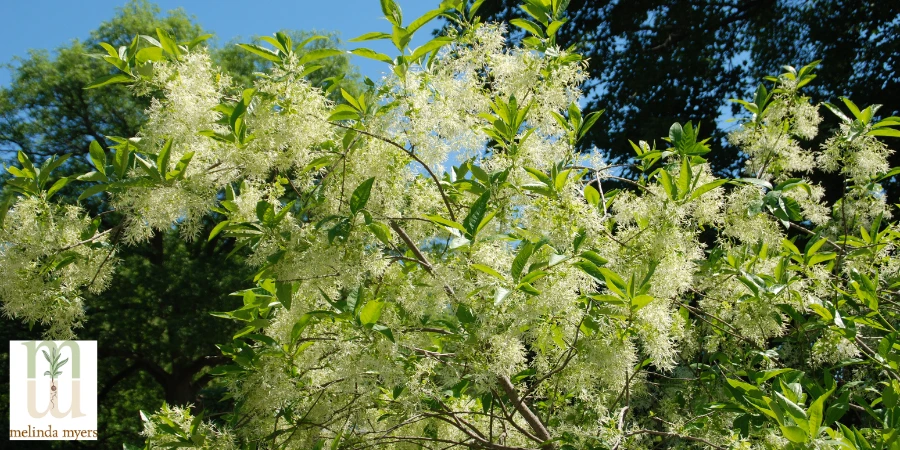
Chionanthus Virginicus
Add a bit of sweet fragrance to gardens with one or several fringe trees (Chionanathus virginicus). Grow it as a specimen plant, one or more in a woodland border or garden bed. Fringe trees flower best in full sun, but the foliage looks best in partial shade. Be patient, as this tree starts sprouting leaves later than many of your other plants. Watch for the fluffy white flowers that appear as the leaves expand. Plants may be male or female, and some may also bear perfect flowers with both male and female reproductive parts. If both male and female plants are present in your landscape, the female plant will produce dark blue egg-shaped fruit that the songbirds will enjoy. Hardy in zones 3 to 9. It can tolerate occasionally wet and dry soil.
You’ll attract hummingbirds, butterflies, bees, and other pollinators when you add a Carolina Silverbell (Halesia Carolina) to your landscape. Hardy in zones 4 to 8, possibly 9, the leaves appear around the same time or right after the showy, usually white, bell-shaped flowers. Grow it in full sun to part shade and moist, organically rich soil. It is not drought tolerant, so ensure it receives sufficient water during dry periods. Show off its beauty by planting it in front of an evergreen and combine with rhododendrons and azaleas for an outstanding spring display. It can be grown near black walnut trees and the deer tend to leave it be.
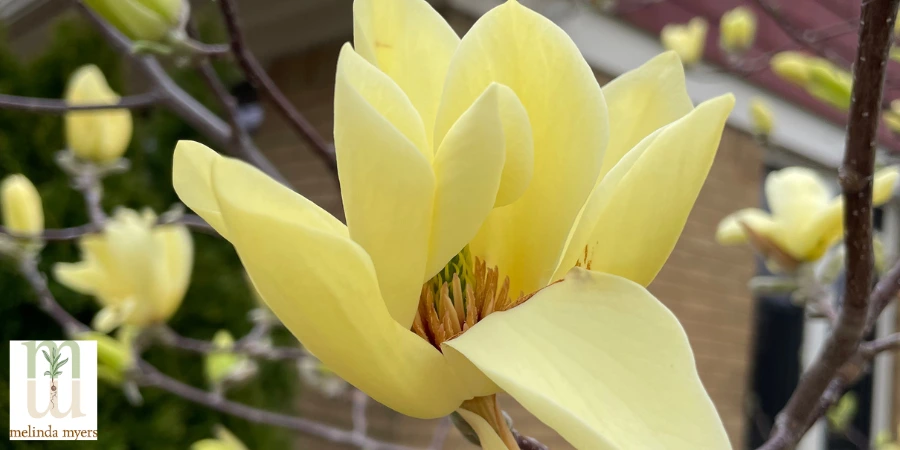
Butterfly Mangolia
Native and non-native magnolias’ showy flowers, glossy green leaves, and stately manner make them easy to include in a variety of landscape styles. You can find magnolias as short as 8 feet and up to 40 feet or more tall. Some are evergreen, and the flowers may be white, pink, purple, and even yellow. If fragrance is important, select one known for its fragrant blooms, and if you want additional flowers, select one of the Little Girl cultivars known to produce a few additional flowers sporadically throughout the summer. Bees, pollinators, and songbirds will also enjoy the flowers and fruit of these beautiful trees. Grow them in moist, well-drained, slightly acidic soil in full to part sun as specimen plants or in small groupings. Hardy in zones 4, possibly 3 to 8, select one suited to your climate and garden design.

Magnolia Jane one of the Little Girl series
Add some summer blooms to your landscape with Mountain Stewartia (Stewartia ovata), also known as Mountain Camellia, and summer dogwood. Give this small tree a prominent spot in the yard where you can enjoy the white cup-shaped summer blooms, orange-red fall color, and attractive bark. Plant it in full sun to part shade with moist, well-drained organic soil. Avoid hot, dry locations and those with compacted soil. This small tree is hardy in zones 5 to 9 and appreciates some shade in areas where summers are hot.
Smoke tree (Cotinus spp.) gets its common name from the hairy flower stems that persist after the flowers fade. These create the smokey clouds that persist throughout most of the summer. The blue-green leaves turn an attractive yellow, red, amber, red, or purplish in the fall. Yellow, red, and purple-leafed cultivars are also available. Hardy in zones 4, possibly 3 to 8, prefers full sun to part shade and well-drained soil. It is drought, heat, and poor soil tolerant and helps attract butterflies, pollinators, and songbirds to the garden.
End the summer with the fragrant and showy flowers of Seven-son Flower (Heptacodium miconiodies). The nectar-rich creamy white flowers attract bees, monarch butterflies, and other pollinators. But the show is not over when the petals drop, leaving the rose-colored sepals to brighten the landscape for several weeks. This, along with the showy bark, provides year-round beauty in the garden. Grow this zone 5 to 9 hardy plant in full sun to part shade. It prefers moist, well-drained soil but will tolerate poor soil. Seven-son flowers benefit from a bit of afternoon shade in hotter regions.
Include a few flowering shrubs in garden beds, shrub borders, and mixed plantings. Just like the trees, look for those that provide multiple seasons of beauty and attract and support pollinators and songbirds.
Start and end the growing season with witch hazel. Vernal witch hazel (Hamamelis vernalis) starts the year with yellow, orange, or red flowers that appear in winter or early spring and ends the season with an attractive yellow fall color. A few vernal witch hazel cultivars have orange and red fall colors, adding to their ornamental appeal. Hardy in zones 4 to 8, it performs best with consistently moist soil in full to partial sun. Finish off the growing season with the yellow blooms of common witch hazel (Hamamelis virginiana) revealed as the yellow fall leaves drop. Hardy in zones 3 to 8 or 9 makes a nice addition to naturalized areas, shrub plantings, and spaces that can accommodate this large shrub. It prefers similar growing conditions to vernal witch hazel.
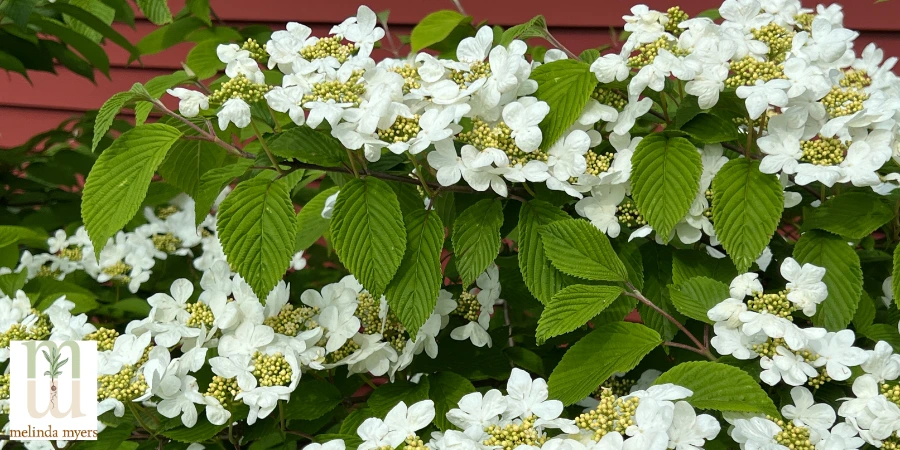
Viburnum
Viburnums offer a variety of benefits, including spring blooms, attractive foliage, fall color, and fruit that attract songbirds. Use them to create an attractive screen, hedge, or in a mixed border. Several viburnums like Korean Spice (Viburnum carlesii) with its fragrant flowers and double file (Viburnum plicatum f. tomentosum) with its horizontal branching make great specimens or impressive small groupings in the landscape. These two viburnums, along with David, Judd, leatherleaf, tea, and Siebold, are the most resistant to the Viburnum leaf beetle that has been causing severe damage to many, including some native viburnums. Hardy in zones 4 to 8, most prefer moist, well-drained soil in full sun to light shade, attract songbirds, butterflies, and pollinators, and are rarely or seldom damaged by deer.
Fothergilla’s fragrant white spring flowers are a favorite of hummingbirds. This beauty ends its season with a colorful mix of yellow, orange, and scarlet fall colors, often on the same leaf. This low-maintenance shrub also attracts bees and other pollinators, and deer tend to leave it be, but watch out for the rabbits. The dwarf species (Fothergilla gardenia) is hardy in zones 5, possibly 4 to 8 or 9, and grows 3 to 6’ tall, while the large fothergilla (Fothergilla major) hardy in zones 4 to 8 can grow up to 10’ tall. Both prefer moist, well-drained, slightly acidic soil and do well in partial shade but produce the best fall color in full sun.
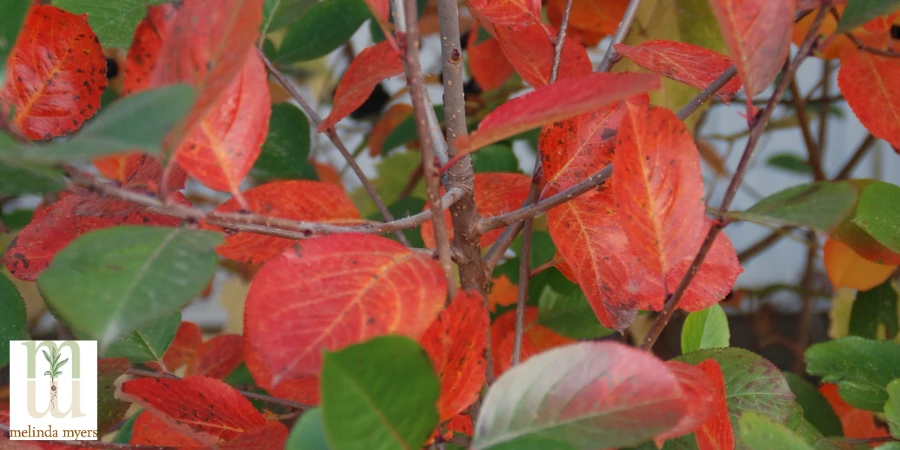
Chokeberry
Don’t let the common name stop you from adding chokeberries (Aronia spp. and cultivars) to your landscape. The white spring flowers attract and support pollinators, glossy green leaves turn a brilliant red in the fall, and the fruit persists into winter. The fruit is bitter and tart but makes great jams, jellies, and wines. Birds and small mammals will dine on the fruit in winter. This shade and moist to wet soil tolerant plant is often used in rain gardens. Hardy, in zones 3 to 9, you will now find several cultivars of black chokeberry (Aronia melanocarpa) ranging in size from 8” to 5’ tall.

Saint John’s Wort
Brighten your summer garden with the yellow flowers of Saint John’s Wort (Hypericum spp.) You can find various species of this easy-to-grow shrub hardy in zones 4 to 8. Most hypericums prefer full to part sun and moist, well-drained soil but tolerate drought and occasional wet soil, and tend to be deer-resistant. The long-lasting yellow flowers provide welcome nectar and pollen for bees and butterflies. Plant them on slopes, in pollinator gardens, borders, and more.
I can’t talk about flowering shrubs without including the very popular hydrangeas. You’ll find a wide variety of these easy-care shrubs to fit just about any landscape. Use tree forms as focal points and accent plants, taller shrubs for screening or hedges, and those with colorful flowers, bark, or fall color to help create year-round interest in any spot in your landscape. The smooth hydrangea (Hydrangea arboresens) also known as Hills of Snow, Snowball, or Annabelle type, are traditional favorites for the shade. They will tolerate full sun if the soil is kept moist. The flowers are always white, except for those bred for their pink color, no matter the soil pH. Big leaf hydrangeas (Hydrangea macrophylla) are the ones with the large or lacy flowers that are pink in high pH or alkaline soils and blue in acidic, low pH soils. New repeat blooming varieties provide a second flush of flowers and have allowed those in more northern regions to experience some blooms. This hydrangea forms its flowers the previous season and often dies back to the ground in cold winters, eliminating the flower buds. The second flush of flowers forms on new growth, providing a second season of bloom for those in milder climates.

Panicle Hydrangea
Panicle hydrangea (Hydrangea paniculata) cultivars range in size from 3’ to more than 10’ tall. Select one that will fit the space once it is mature. This hydrangea flowers on new growth like the Annabelle types and are reliable bloomers. Panicle hydrangea flowers typically start out white, turn pink or red, and then brown. Include a variety to extend the bloom time throughout summer into fall.
Oakleaf Hydrangea (Hydrangea quercifolia) is shade tolerant and offers four seasons of beauty. The large dark green leaves resemble those of an oak tree and turn bronze, maroon, or purple in fall. Once the leaves drop, the cinnamon-colored exfoliating bark is revealed. Like the big leaf hydrangea this one forms its flower buds the previous season.
Always select the best plant suited to the growing conditions, your landscape design, and maintenance practices. Keeping it healthy and long-lived starts with proper planting. Early spring and fall are the best times to plant trees and shrubs, allowing the plants to start adapting to their new location before the heat of summer and extreme cold arrive. This is ideal for the plant and the garden, as it is easier for you to provide needed care when the weather is less brutal.

As you have probably noticed, trees and shrubs grown in pots are available throughout the growing season. This extends the planting season, allowing us more time to add these plants to our landscapes. Just make sure you have the time and ability to provide the needed care for new plantings as the temperatures rise and summer droughts occur.
Planting at the right depth is critical to the longevity of your plants. Locate the root flare, the area where roots extend from the trunk, on the trees. Find the crown of shrubs where the roots meet the stems. Make sure these end up even with or slightly above the soil surface when planted. Mulching the soil and providing needed water for the first few years is critical for helping these plants get established and grow into healthy, long-lasting specimens. Pull mulch back from the trunk of the trees and stems of the shrubs to avoid problems with rot, voles and other issues mulch piled on the plants can cause. Continue to provide needed water throughout their lives.
In general, wait a year to fertilize your plants, as high-nitrogen fertilizers can promote top growth at the expense of roots. You want your trees and shrubs to establish a robust root system before expending much of their energy into top growth. Milorganite’s low nitrogen and slow-release formulation can be applied at planting or the following year. It promotes balanced above and below-ground growth, won’t interfere with flowering, and the 85% organic matter helps feed the soil.
When shopping for plants, always check the tags, talk to experts, and consult your University Extension service for advice on the best plants for your area. Make sure it will thrive in the growing conditions, fit the available space when mature, and provide the seasonal benefits you desire. With proper plant selection and care, you will enjoy seasons and decades of beauty.

